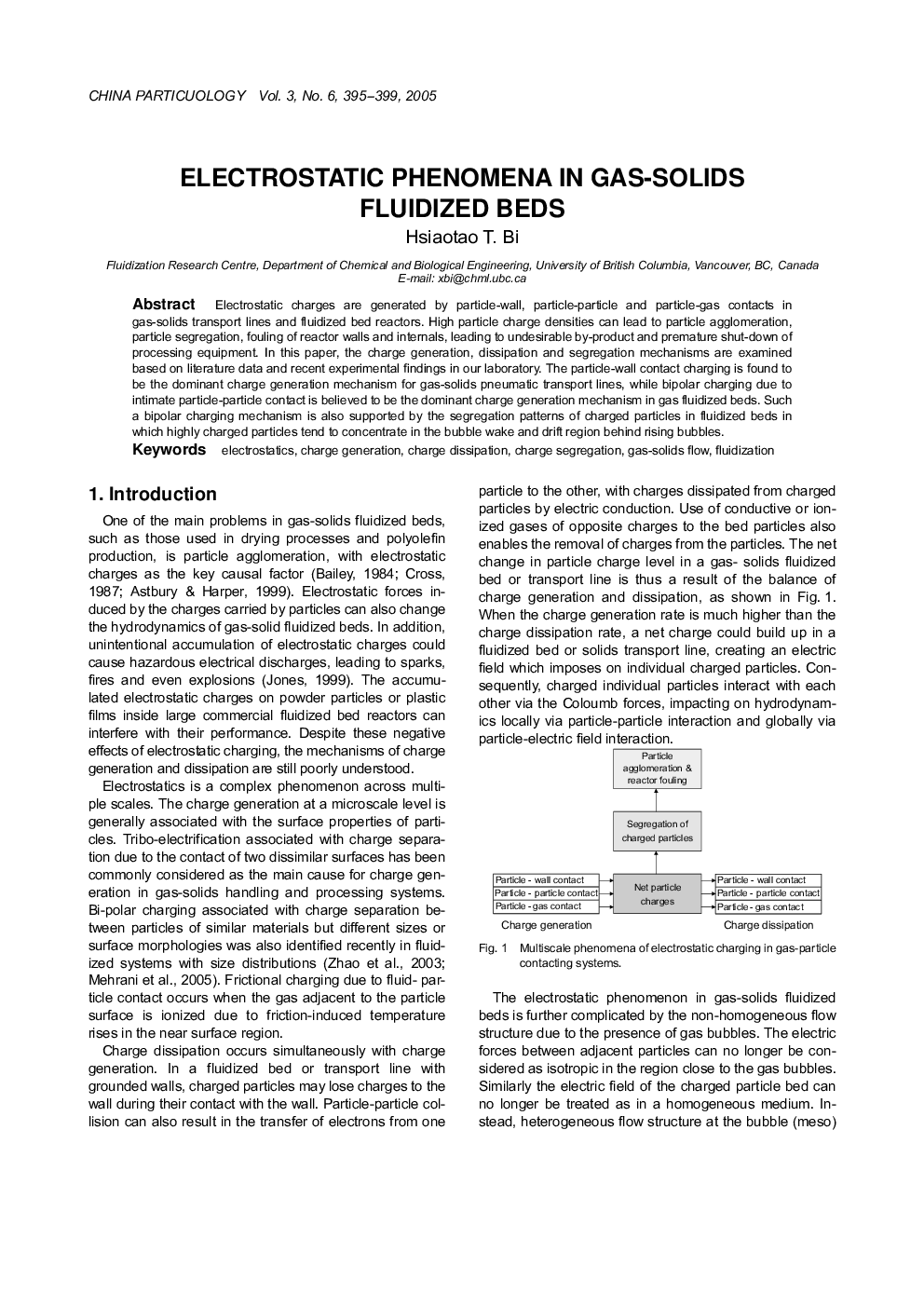| Article ID | Journal | Published Year | Pages | File Type |
|---|---|---|---|---|
| 9690495 | China Particuology | 2005 | 5 Pages |
Abstract
Electrostatic charges are generated by particle-wall, particle-particle and particle-gas contacts in gas-solids transport lines and fluidized bed reactors. High particle charge densities can lead to particle agglomeration, particle segregation, fouling of reactor walls and internals, leading to undesirable by-product and premature shut-down of processing equipment. In this paper, the charge generation, dissipation and segregation mechanisms are examined based on literature data and recent experimental findings in our laboratory. The particle-wall contact charging is found to be the dominant charge generation mechanism for gas-solids pneumatic transport lines, while bipolar charging due to intimate particle-particle contact is believed to be the dominant charge generation mechanism in gas fluidized beds. Such a bipolar charging mechanism is also supported by the segregation patterns of charged particles in fluidized beds in which highly charged particles tend to concentrate in the bubble wake and drift region behind rising bubbles.
Related Topics
Physical Sciences and Engineering
Chemical Engineering
Fluid Flow and Transfer Processes
Authors
Hsiaotao T. Bi,
